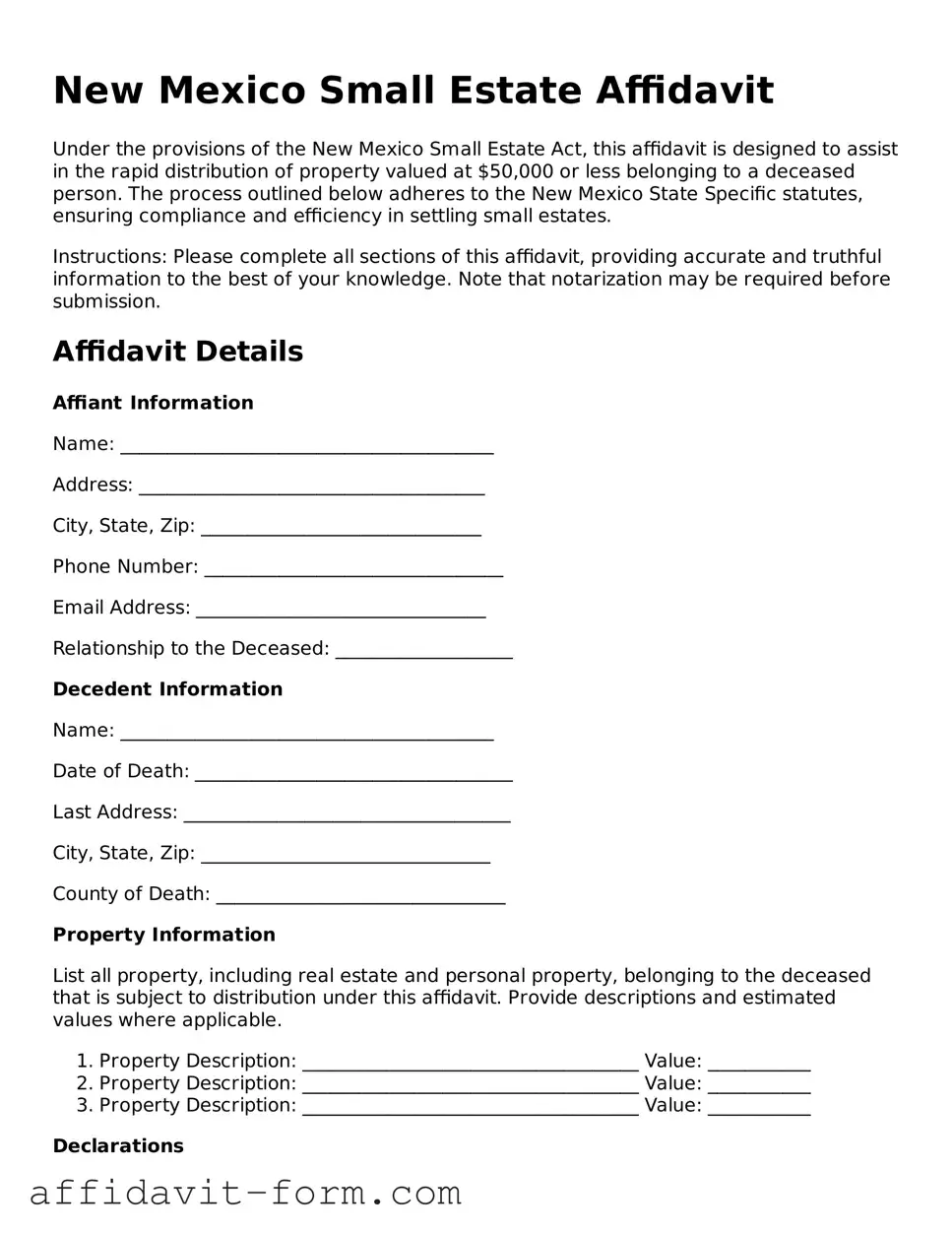New Mexico Small Estate Affidavit
Under the provisions of the New Mexico Small Estate Act, this affidavit is designed to assist in the rapid distribution of property valued at $50,000 or less belonging to a deceased person. The process outlined below adheres to the New Mexico State Specific statutes, ensuring compliance and efficiency in settling small estates.
Instructions: Please complete all sections of this affidavit, providing accurate and truthful information to the best of your knowledge. Note that notarization may be required before submission.
Affidavit Details
Affiant Information
Name: ________________________________________
Address: _____________________________________
City, State, Zip: ______________________________
Phone Number: ________________________________
Email Address: _______________________________
Relationship to the Deceased: ___________________
Decedent Information
Name: ________________________________________
Date of Death: __________________________________
Last Address: ___________________________________
City, State, Zip: _______________________________
County of Death: _______________________________
Property Information
List all property, including real estate and personal property, belonging to the deceased that is subject to distribution under this affidavit. Provide descriptions and estimated values where applicable.
- Property Description: ____________________________________ Value: ___________
- Property Description: ____________________________________ Value: ___________
- Property Description: ____________________________________ Value: ___________
Declarations
- The information provided in this affidavit is accurate to the best of my knowledge and belief.
- I understand that false statements may result in penalties under law.
- The value of the entire estate subject to probate, excluding liens and encumbrances, does not exceed $50,000.
- Thirty days have passed since the death of the decedent.
- All debts, including funeral and burial expenses, have been paid or provided for.
- No application for the appointment of a personal representative is pending or has been granted in any jurisdiction.
Signature of Affiant
Date: ____________________________
Signature: _________________________
This document is not a substitute for legal advice. Individuals may wish to consult with a legal professional to ensure compliance with all New Mexico laws and regulations regarding small estates.
